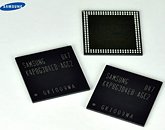Raevenlord
News Editor
- Joined
- Aug 12, 2016
- Messages
- 3,755 (1.20/day)
- Location
- Portugal
| System Name | The Ryzening |
|---|---|
| Processor | AMD Ryzen 9 5900X |
| Motherboard | MSI X570 MAG TOMAHAWK |
| Cooling | Lian Li Galahad 360mm AIO |
| Memory | 32 GB G.Skill Trident Z F4-3733 (4x 8 GB) |
| Video Card(s) | Gigabyte RTX 3070 Ti |
| Storage | Boot: Transcend MTE220S 2TB, Kintson A2000 1TB, Seagate Firewolf Pro 14 TB |
| Display(s) | Acer Nitro VG270UP (1440p 144 Hz IPS) |
| Case | Lian Li O11DX Dynamic White |
| Audio Device(s) | iFi Audio Zen DAC |
| Power Supply | Seasonic Focus+ 750 W |
| Mouse | Cooler Master Masterkeys Lite L |
| Keyboard | Cooler Master Masterkeys Lite L |
| Software | Windows 10 x64 |
It's been a couple years now that we've seen continuously increasing pricing of DRAM and NAND semiconductors. The price increase, which has been hailed and documented over, over, and over again (and there are way more articles on this subject here on TPU), follows reported increased demand which has failed to be accompanied by its respective manufacturing and supply ability.
However, reports that companies were planning on increasing production of DRAM and NAND below the expected increases in supply demand may have turned at least some regulatory eyes towards the issue. China's National Development and Reform Commission's Pricing Supervision Department (NDRC) said they are aware of the situation, how it could point towards price-fixing from the four major NAND production players (Samsung, Hynix, Micron and Toshiba), and are looking into the matter. "We have noticed the price surge and will pay more attention to future problems that may be caused by 'price fixing' in the sector," the official Xu Xinyu was quoted as saying in an interview to Chinese newspaper Daily China.


Samsung at least is reported to have already been approached by Chinese officials regarding this matter, although it would seem both Samsung and SK Hynix have declined to comment on the matter. Chinese companies have been particularly affected by the NAND and DRAM price surges, since China has a booming smartphone industry - the number of Chinese smartphone companies is nothing short of numerous, really. As such, and with Chinese semiconductor manufacturers' inability to produce the premium, best price/performance 3D NAND, means these companies have been particularly subjected to the markets' whims and price increases - a situation that China's businesses would certainly like to see fixed. "China is the biggest smartphone manufacturer... So of course China wants to pay more attention and play a more important role in the whole industry," said Hattie He, Shanghai-based analyst at research firm Canalys. "Memory is one of the key components for smartphones so it makes sense that Chinese vendors want to have more capabilities to control these components," she said.
View at TechPowerUp Main Site
However, reports that companies were planning on increasing production of DRAM and NAND below the expected increases in supply demand may have turned at least some regulatory eyes towards the issue. China's National Development and Reform Commission's Pricing Supervision Department (NDRC) said they are aware of the situation, how it could point towards price-fixing from the four major NAND production players (Samsung, Hynix, Micron and Toshiba), and are looking into the matter. "We have noticed the price surge and will pay more attention to future problems that may be caused by 'price fixing' in the sector," the official Xu Xinyu was quoted as saying in an interview to Chinese newspaper Daily China.


Samsung at least is reported to have already been approached by Chinese officials regarding this matter, although it would seem both Samsung and SK Hynix have declined to comment on the matter. Chinese companies have been particularly affected by the NAND and DRAM price surges, since China has a booming smartphone industry - the number of Chinese smartphone companies is nothing short of numerous, really. As such, and with Chinese semiconductor manufacturers' inability to produce the premium, best price/performance 3D NAND, means these companies have been particularly subjected to the markets' whims and price increases - a situation that China's businesses would certainly like to see fixed. "China is the biggest smartphone manufacturer... So of course China wants to pay more attention and play a more important role in the whole industry," said Hattie He, Shanghai-based analyst at research firm Canalys. "Memory is one of the key components for smartphones so it makes sense that Chinese vendors want to have more capabilities to control these components," she said.
View at TechPowerUp Main Site




